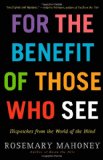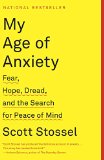Summary | Excerpt | Reviews | Beyond the book | Read-Alikes | Genres & Themes | Author Bio

A Memoir
by Anna LyndseyIn August 1999, Anna Lyndsey travelled to Alderney, one of the smallest islands in the archipelago known as the Channel Islands, situated off the southwest coast of England. From this vantage point, she bore witness to that rare astronomical phenomenon, a total solar eclipse. As the moon made its way inexorably across the sun, its shadow gradually obliterating the warm, life-giving light, Anna watched in fascination. "I will never forget the speed, the terrible speed of that approach," she recalls in her memoir, Girl in the Dark. "My breath stopped in my throat, as though the shadow itself sucked away the air." Little could she have known then that she would soon find herself on a similar trajectory - in less than six short years from that summer's day, Anna's life would collide with something that would ultimately banish all the light from her existence and condemn her to perpetual darkness. That something is a skin disorder called Photosensitive Seborrhoeic Dermatitis (see 'Beyond the Book'). A deceptively innocent-sounding malady, it would prove far more sinister, destructive and long-lasting than a lunar shadow passing briefly over the sun.
It all began innocuously enough. Sitting at her desk in April 2005, typing furiously to make a work deadline, the skin on her face began to burn, "like the worst kind of sunburn...like someone is holding a flame-thrower to my head." Soon, it wasn't just the computer screen that caused this reaction - so too did her office's fluorescent lighting. Slowly, but relentlessly, her condition deteriorated until the horrific realization dawned: it was not just artificial light that caused the problem - it was all light, including and especially sunlight. Neither was it just her face that was affected; before long, even the slightest exposure to any form of light, however weak, left her entire body aflame. Doctors were initially puzzled, and the diagnostic process slow. When her condition was finally recognized, the prognosis was bleak. Photosensitive Seborrhoeic Dermatitis, "a well-recognized though rare syndrome which is extremely disabling," is also incurable. And so it was that Anna Lyndsey experienced a "falling away from normal."
The first thing to fall by the wayside was her job as a public servant in a high-profile government department - no longer could she walk the corridors of power. She was forced to give up her beloved flat in London, and found herself sequestered in the spare bedroom of her boyfriend's house, all light expunged by means as varied as foil and UV-filtering film taped to windows, blackout blinds and curtains, and a draught excluder which doubles as a light excluder stretched across the bottom of her door. In this room, which she describes as her "oubliette" - a beautifully and tragically appropriate description - her life contracts to a pinprick. She lives in the "box of darkness," a dungeon in which she is held captive, all but forgotten by the world at large.
Due to their overwhelming gravitational pull, nothing, not even the tiniest particle, can escape a black hole. The same could be said for the black hole that had become Anna Lyndsey's life. Darkness of environment breeds darkness of soul. She writes about her recurrent suicidal thoughts as "an enormous pike, black massive and strong, with spines along its back and rows of razor teeth...which lurks at the bottom of the pool (of her mind) where debris and slime have settled in layers and the water is viscous and clouded." She describes her bad dreams as scorpions, and talks about envying the dead, of disassociation and cognitive dissonance. Lyndsey compares her life to an endless game of snakes and ladders - a game where the snakes are long and plentiful, the ladders short and few.
Despite the grim realities, this memoir is far from unremittingly bleak. By avoiding a chronological account and choosing instead to recount her tale in short, episodic chapters which focus on many of the incidents and people she has encountered on her journey, Lyndsey succeeds in portraying a life that is not completely defined by the terrible totality of her illness. While some of these anecdotes are inevitably heartbreakingly sad, others are unexpectedly funny. There is, for example, a kind of tragic hilarity in her description of the strange light-repelling clothes she is forced to wear, even in the dark. These "complicated finery," include "Victorian pantaloons" beneath layers of long densely woven silk skirts, fitted velvet or corduroy jackets, knee-high boots, all of which combine to render her "a sumptuous creature" reminiscent of a heroine in a novel by Sir Walter Scott.
Girl In The Dark is also remarkable for the hope that is infused on every page. It is partly borne out of the brief periods of partial, inexplicable remission she now occasionally enjoys, times when she can tolerate minimal light. Sometimes these last only an hour, sometimes a day or even a month. They are enough to allow her to tentatively venture into her garden after sunset, or for a nighttime prowl through her neighborhood. It is a hope that these remissions might become less brief and less partial, that one day Lyndsey will be fully restored to the light, and therefore, to life.
Ultimately, the beautiful lyricism of the writing ensures that this book resists the relentless downward pull of its dark subject matter - despite (or perhaps because of) her light-starved existence, Lyndsey writes in mesmerizing prose, so evocative in fact that it illuminates the story from within.
![]() This review was originally published in The BookBrowse Review in April 2015, and has been updated for the
March 2016 edition.
Click here to go to this issue.
This review was originally published in The BookBrowse Review in April 2015, and has been updated for the
March 2016 edition.
Click here to go to this issue.

If you liked Girl in the Dark, try these:

For the Benefit of Those Who See
by Rosemary Mahoney
Published 2015
Rosemary Mahoney tells the story of Braille Without Borders, the first school for the blind in Tibet, and of Sabriye Tenberken, the remarkable blind woman who founded the school.

by Scott Stossel
Published 2015
A riveting, revelatory, and moving account of the author's struggles with anxiety, and of the history of efforts by scientists, philosophers, and writers to understand the condition.
Your guide toexceptional books
BookBrowse seeks out and recommends the best in contemporary fiction and nonfiction—books that not only engage and entertain but also deepen our understanding of ourselves and the world around us.